R-4
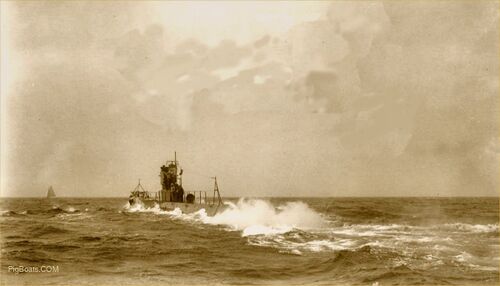
There are a number of crew on the main deck at the aft end of the bridge fairwater, several more on the fairwater next to the periscope shears, blocking the submarine's name, and several on the bridge itself. All are wearing light clothing. The hatch is open to allow air to the diesels and probably allow some ventilation of fumes from the submarine.
This is a mid 1919 to early 1920 photo since the submarine's deck gun has not yet been installed, although the mine cable anti-fouling structure surrounding the SC and J-tube listening heads on deck is in place. By mid 1920 these frames have been removed from all the R-class boats.
Image from an original glass plate negative in the private collection of Ric Hedman.
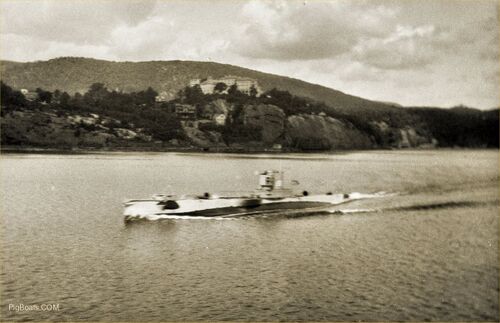
The large hotel or resort on the cliff ought to give some indication of location but it is yet to be found. Anyone recognizing this location please contact us.
From an original negative in the private collection of Ric Hedman.
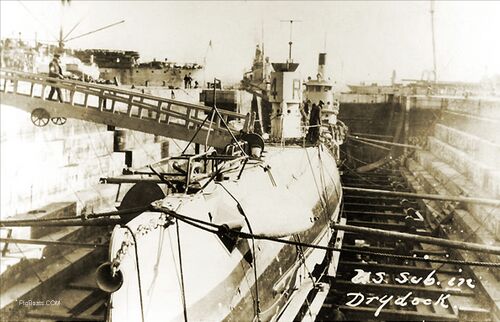
U.S. Navy photo.
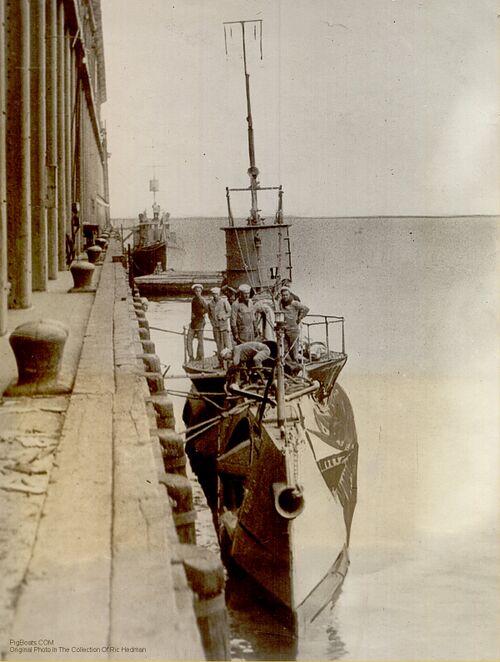
This photo was used by the newspapers for the story about the R-4 finding a seaplane trying to make a non-stop flight from San Francisco to Hawaii. The plane ran out of gas and was adrift for nine days before rescue by the R-4. The newspaper had heavily edited the negative (specifically the port side of the R-4) to make detail stand out during the printing process.
It looks like there is some bedding being aired draped over the deck gun. One man looks to be adjusting a mooring line and what appears to be an officer is standing just behind the man on the right.
Photo in the private collection of Ric Hedman.
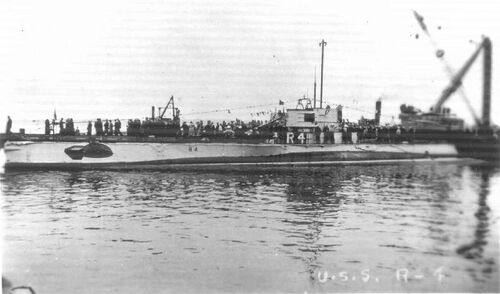
Photo in the private collection of Ric Hedman.
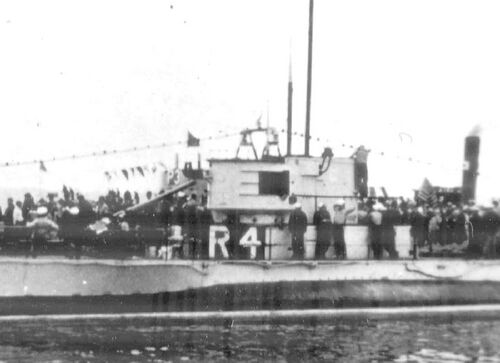
Photo in the private collection of Ric Hedman.
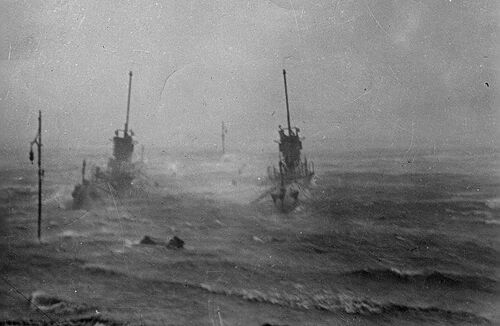
The 1938 hurricane sent so much water up the Thames River that the pier these two boats were moored to was submerged by the tide. You can see the mooring lines from the boats to the dock going into the water.
The hurricane made landfall in Suffolk County on Long Island, New York on September 21, 1938 as a strong Category 3 hurricane on the present-day Saffir-Simpson Hurricane Scale with a central pressure of 946 mbar (hPa).It then traveled across Long Island Sound into Connecticut, Rhode Island, Massachusetts, New Hampshire, Vermont, and finally into Canada while still moving at an unusually high speed.
The hurricane hit Long Island around 3:30 p.m., which was just a few hours before astronomical high tide. At this time the eye was about 50 miles across and the hurricane was about 500 miles wide.
New London was first swept by the winds and storm surge; then the waterfront business district caught fire and burned out of control for 10 hours. Stately homes along Ocean Beach were leveled by the storm surge. The permanently anchored 240-ton lightship at the head of New London Harbor was found on a sand bar two miles away.
Photo in the private collection of Ric Hedman.
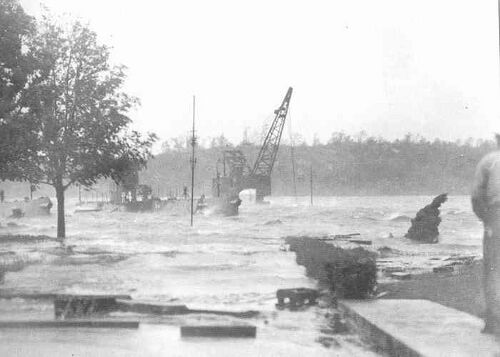
Photo in the private collection of Ric Hedman.
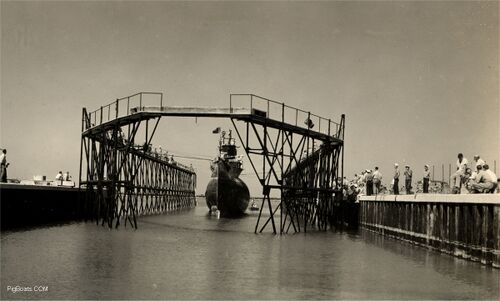
U.S. Navy photo.
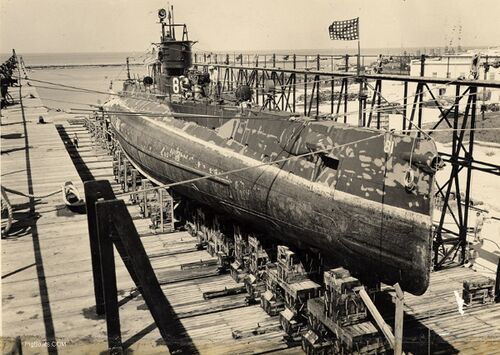
U.S. Navy photo.

U.S. Navy photo.

Photo submitted by Ron Stalma, whose father Andrew Stalma MoMM 2/c served aboard the R-4 during WW II.
Page created by:
Ric Hedman & David Johnston
1999 - 2023 - PigBoats.COM©
Mountlake Terrace, WA, Norfolk, VA
webmaster at pigboats dot com
